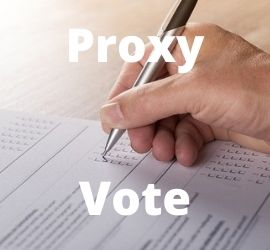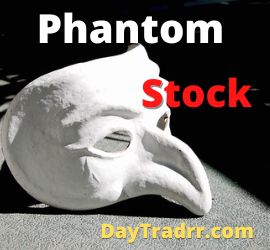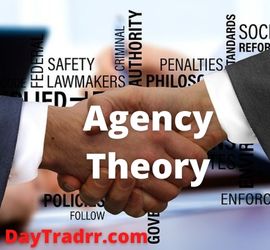Stop on Quote vs. Limit Orders vs. Stop Orders
 A Stop on Quote Order enables an investor to execute a trade at a specified price, or better after the quoted stock price reaches the desired stop price. It is used by investors who want to limit their downside to ensure that a stock is sold before the price falls too far. Stop on quote orders can be used to limit losses or buy stocks only after they’ve dropped to a certain pre-specified price.
A Stop on Quote Order enables an investor to execute a trade at a specified price, or better after the quoted stock price reaches the desired stop price. It is used by investors who want to limit their downside to ensure that a stock is sold before the price falls too far. Stop on quote orders can be used to limit losses or buy stocks only after they’ve dropped to a certain pre-specified price.
Different types of orders allow you to give specific instructions regarding how you want your broker to fill your trades. When you place a limit order or stop order, you are telling your broker you don’t want the market price, the current price at which a stock is trading. Instead, you want your order to be executed once the stock price matches a price that you specify. There are two primary differences between limit and stop orders.
Limit orders vs stop orders
- Limit order uses a price to designate the least acceptable amount for the transaction to take place and it can be seen by the market.
- A stop order uses a price to merely trigger an actual order once the specified price has been traded. A stop order is not seen by the market until it is triggered.
For example, if you want to buy a $90 stock at $88 per share, then your limit order can be seen by the market and filled when sellers are willing to meet that price. A stop order will not be seen by the market and will only be triggered once the stop price has been met or exceeded. If the price triggers the stop in a regular stop order, a market order will be entered. If the order is a stop-limit, then a limit order will be placed conditional on the stop price being triggered. Thus, a stop-limit order will require both a stop price and a limit price, which may or may not be the same.
Uses of Stop On Quote Orders
There are four reasons to use a Stop On Quote:
- Sell Stop On Quote for Long Position: If you buy an asset for a certain price and place a sell stop on quote for a lower price, you want to lock in profits or define risk by selling at the lower price set to prevent further loss.
- Buy Stop On Quote for Long Position: If you set a Buy Stop On Quote for a higher price than the current market price, you want confirmation that the market is moving upward before you buy, and once that price is met and confirmed, your order will execute.
- Sell Stop On Quote for Short Position: If you set a Sell Stop On Quote for a lower price than the current market price, you want confirmation that the market is moving lower before you perform a short trade. If that lower price is met, the short position will be entered
- Buy Stop On Quote for Short Position: If you are shorting a trade and the price moves, upward, setting a Buy Stop On Quote will exit the trade if the stock price reaches a set price above the current market price.
Example of Stop On Quote
For example, Daytradrr has a stock portfolio worth $1,00,000 and wants to invest $100,000. There is a new pharmaceutical stock called Johnson & Jackson Inc which just announced the release of a new vaccine. $100,000 would be 10% of Daytradrr’s portfolio so if something bad happens, the portfolio could suffer an unacceptable loss. So, Daytradrr buys 1000 shares of J&J for a price of $100/share. Next, they place a sell order using a Stop On Quote for $80. This way, if the price drops to $80 or lower, Daytradrr will sell the stock and only lose $20,000 ($20 x 1000 shares) which is 2% of the portfolio. Even though $100,000 is invested, only $20,000 is ever at risk.
However, Stop On Quote orders are not perfect. The stock could drop suddenly. Imagine it dropped overnight to $50/share due to the release of negative news about the new vaccine. The sell order will still be triggered. But, it may execute at $50 depending on when the order is placed due to older orders being filled first. That means Daytradrr’s J&J holdings could drop to $50,000 instead of $80,000 which would significantly exceed the amount Daytradrr was willing to risk. To protect yourself when a Stop Order executes during a major sell-off, you can use a Stop Limit On Order, also known as a Stop Limit Order or a Limit Stop Loss.
What is the Difference Between a Stop On Quote and a Stop Limit On Quote?
The Stop On Quote order is often mistaken for a Stop Limit On Quote. However, there is an important distinction between these two orders. So, what makes a Stop Limit On Quote different? Stop Limit On Quotes are more advanced in the sense that once the stop price is reached, a limit order is then exercised. It does not immediately sell at the market value once the Stop Price is reached. You can still hold the asset and ensure it is sold at an acceptable price according to your selected Limit Price.
In the above example, since a limit wasn’t implemented, Daytradrr stood to lose a lot more than expected. If a Limit Order was in place, it would have looked something like this:
Daytradrr would have used a Stop Limit On Quote as the order type. They would have selected $80 as the Stop Price and the Stop Limit would be $75. Therefore, if the J&J stock price dropped to $80, the limit order would be made active and sell as long as the price remains at or above $75. This way if they miss the sell-off and the price drives down to $50, the order will not be filled. At least he can hold it for a potential bounce. If the price later rises to $75, he will then sell at the price that he set as a limit. Similarly, you can use Stop Limit On Orders to buy into a position that has momentum. It offers protection from buying in too high.
A stop-limit-on-quote order is an order that an investor places with their broker, which combines both a stop-loss order and a limit order. What the stop-limit-on-quote order does is enable an investor to execute a trade at a specified price, or better, after the stock price has reached the investor’s desired stop price. In a sense, it’s a two-phase order as it is only executed by the broker after the stock has reached the investor’s desired stop price, but like a limit order, it will only be executed at that price or better. Because of that, the key difference between a stop-loss order and a stop-limit-on-quote order is that the trade won’t be made if the stock price isn’t at an investor’s desired price, or better. (Source: nasdaq.com)
Stop on Quote Order vs Stop Order
Stop orders come in a few different variations, but they are all effectively conditional order instructions to a broker. They are set based on a price that is not yet available in the market when the order is originally placed. Once the future price is available, a stop order will be triggered. However, the broker will execute them differently depending on their type.
- Stop on quote – makes it clear that the stop order will only be triggered once a valid quoted price in the market has been met. For example, if you set a stop order with a stop price of $90, it will be triggered only if a valid quote at $90 or better is met.
- Stop order – A normal stop order will turn into a traditional market order once the stop price is met or exceeded. A stop order can be set as an entry order as well. To open a position once the price of a stock is rising, a stop market order could be set above the current market price. This turns into a regular market order once the specified stop price is reached.
Limit Orders
A limit order is an order to buy or sell a stock for a specific price. For example, if you want to purchase shares of an $80 stock at $70 or less, you can set a limit order that won’t be filled unless the price you specified becomes available. However, you cannot set a plain limit order to buy a stock above the market price because a better price is already available.
Similarly, you can set a limit order to sell a stock once a specific price is available. Imagine that you own stock worth $90 per share and you want to sell if the price gets to $99 per share. A limit order can be set at $99 that will only be filled at that price or better. Again, you cannot set a limit order to sell below the current market price because there are better prices available.
Stop Limit Orders
A stop-limit order consists of two prices: a stop price and a limit price. This order type can be used to activate a limit order to buy or sell a security once a specific stop price has been met. For example, imagine you purchase shares at $100 and expect the stock to rise. You could place a stop-limit order to sell the shares if your forecast was wrong.
If you set the stop price at $90 and the limit price at $91, the order will be activated if the stock trades at $90 or worse. However, a limit order will be filled only if the limit price you selected is available in the market. If the stock drops overnight to $89 per share, that is below your stop price so that the order will be activated. However, it will not be filled immediately because there are no buyers at your limit price of $91 per share. The stop price and the limit price can be the same in this order scenario.
Stop limit order vs stop order
- A stop-limit order – has two primary risks. They are no fills or partial fills. It is possible for your stop price to be triggered and your limit price to remain unavailable. If you used a stop-limit order as a stop loss to exit a long position once the stock started to drop, it might not close your trade. Even if the limit price is available after a stop price has been triggered, your entire order may not be executed if there wasn’t enough liquidity at that price. For example, if you wanted to sell 500 shares at a limit price of $75, but only 300 were filled, then you may suffer further losses on the remaining 200 shares.
- A stop order – avoids the risks of no fills or partial fills, but because it is a market order, you may have your order filled at a price much worse than what you were expecting. For example, imagine that you have set a stop order at $70 on a stock that you bought for $75 per share. After disappointing investors, the company reports earnings after the market closes and opens the next day at $60 per share. Your order will be activated, and you could be out of the trade at $60, far below your stop price of $70. (Source: investopedia.com)
Up Next: What Is a Proxy Vote?
 A proxy vote is a ballot cast by a delegate or representative on behalf of the original vote-holder known as the principal.
A proxy vote is a ballot cast by a delegate or representative on behalf of the original vote-holder known as the principal.
A representative or firm can cast a proxy vote on behalf of the original vote-holder or principal. The principal is often a shareholder in a publicly traded corporation who may not be able to attend the shareholder meeting, or who may not choose to vote on a particular issue. The appointed representative is known as the proxy or proxy voter.
When you buy a stock, you become a part business owner of that company. Proxy voting allows shareholders to influence company operations and decisions. It’s the primary way that shareholders have a say in how public companies around the world are governed. The issues at stake in many proxy votes typically focus on the long-term benefits to a company. This makes the process that much more relevant for investors and traders.




